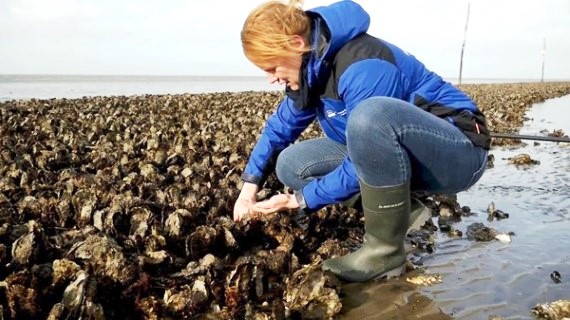In February 2021, parts of Texas saw some of its coldest temperatures in more than 30 years, with some areas breaking records that are more than a century old. This state in the USA which is known for its sprawling deserts and excruciating heat waves was covered in a thick layer of ice with temperatures plummeting to 0°F (-18°C).
A state of emergency was declared and disaster relief was coordinated as the weather became increasingly deadly, evident from massive accidents on icy roads, power cuts, and food shortages.
Although a “polar vortex” was responsible for the freezing conditions, UN weather experts warned of a long-term warming trend of climate change where cold events will become rarer, in contrast to heat temperature records and heat waves.
On the other side of the world, devastating wildfires blazed across southern Australia in late 2019 and early 2020. Fires burned through an estimated 110,000 square kilometres and killed at least 34 people and destroyed about 6,000 buildings. The fires also killed about 1.5 billion animals leaving scientists fearful that many native plant and animal species may never recover.
Reports stated that human-caused climate change made those fires at least 30% more likely to happen (van Oldenborgh et al., 2021).
In Malaysia, unusual and prolonged dry seasons and water shortages in Selangor and Klang Valley, massive floods that befell Peninsular Malaysia, mini tornadoes in Kedah, and near misses with tropical storms are all tell-tale signs of climate change. By 2050, projections show that Malaysia will experience temperature rise of up to 1.5°C which will give rise to more severe floods, longer droughts, and sea level rises of between 15 to 95 cm, threatening urban populations in coastal areas (Rahman et al., 2009).
There is no dispute that the climate is changing. Global temperature rise, warming oceans, shrinking ice sheets, glacial retreats, sea level rise, ocean acidification, and extreme events, have all been presented as compelling evidence for rapid climate change (NASA, 2021). This, coupled with the relentless drive for economic growth along with the increase in global population and land degradation, has placed humanity and other life forms on earth, on the road to a catastrophic tipping point (IPCC, 2018).
There is an urgent need for innovative approaches to nature conservation, ecological restoration, and addressing global societal challenges to meet society’s needs. Scientists believe that current approaches to restoration and conservation are not occurring at a scale that can redress degradation (Holl, 2017).
To address global societal challenges at the required scale, it is necessary to embark on innovative, large-scale, and policy coherent solutions. One way to do this is by implementing rigorous, evidence-based Nature-based Solutions (NbS) (Cohen-Shacham et al., 2019).
What are NbS?
In recent years, NbS have become very popular in the terrestrial environments. Green roofs, indoor and outdoor green walls, and creating green spaces within urban areas are all part of re-naturing cities. These solutions support the implementation and optimisation of green, blue, and grey infrastructure. Co-benefits include cutting energy and resource demands and costs, reducing the need for heating and air conditioning, reducing air pollution, controlling floods, and supporting recreation activities. Urban regeneration through NbS also offers a context for innovative intervention for green growth and is part of the wider scope of solutions to climate change.
But how do we do this in the sea?
In Malaysia, hard engineered structures like seawalls, breakwaters, and rock revetments are typically used to fortify coastline and impede effects of climate change. These structures which are usually constructed from concrete and quarried rock play their engineered roles in protecting human and property but does not give back to nature as much. Their physical built which lacks surface complexity and harmful chemical properties means fewer marine organisms can use them as habitats, breeding spaces, and food sources. These structures also lack the myriad of ecosystem services provided by natural coastal and marine ecosystems like sea grass beds, mangroves, wetlands, and coral reefs.
Owing to the rise in advocacy, environmental awareness, and persistent proofs of climate change, there has been an aggressive movement or a paradigm shift from using hard engineered structures to protect coastlines, to harnessing the power of nature to play this role. Global pressures to meet various UN Sustainable Development Goals have given rise to governments all over the world contending for chances to carry out NbS on land and at sea.
Seagrass, mangrove, wetlands, and coral planting/restoration efforts are increasingly being carried out in the marine and coastal environments in the race against climate change while protecting people, property, AND biodiversity.
The Seagrass Ocean Rescue (https://www.projectseagrass.org/seagrass-ocean-rescue/), UK’s biggest sea grass restoration scheme, for example, restored sea grass in collaboration with local people in Dale in West Wales. Researchers and scientist spread over 70 million eelgrass seeds over 200 hectares, as part of a 20-plus-year project. Long-term monitoring of the eelgrass revealed an astonishingly resilient ecosystem that is trapping carbon and nitrogen that would otherwise contribute to global warming and pollution.
The ocean re-wilding project is regarded as a “game changer” and has inspired future major projects in other areas in the UK to restore sea grass meadows to help support climate, fisheries and coastal livelihoods.
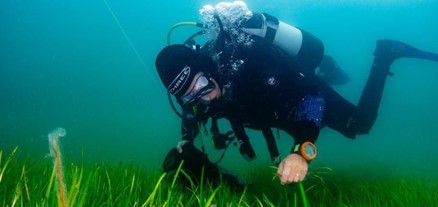
Fig. 1. Seagrass Ocean Rescue plants seagrass to protect coastlines and capture greenhouse gases from the atmosphere in the battle against climate change. Source: Seagrass Ocean Rescue.
The Building with Nature Asia (https://www.wetlands.org/our-network/working-in-partnership/) network used wetlands and mangroves to help solve the global challenges of climate change, human health, biodiversity, and water security (Fig. 2). This project is particularly successful in countries like Indonesia (and gaining ground in Malaysia) where it intends to do massive upscaling over tens of millions of hectares in the coming decade. It is also in the works of building a global agenda that will harness the collective will of diverse stakeholders to accelerate action and bring lasting returns for people and nature.
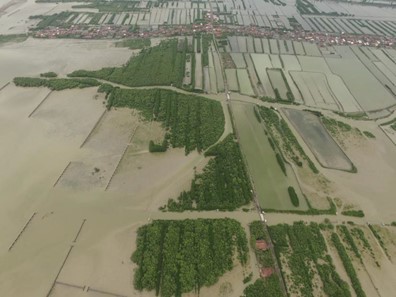
Fig. 2. Asia rallies behind Building with Nature that utilizes mangroves and wetlands to protect the region from hazards including flooding, storm damage, and coastal erosion. Source: Wetlands International.
Reef Check Malaysia (RCM) projects in Malaysia (https://www.reefcheck.org.my/) works to conserve the country’s ocean and marine ecosystems through rehabilitation of coral reefs sites in Tioman Island, Mersing group of islands, and Mantanani Island. RCM teams work with the local communities to empower them to look after the marine resources. They employ innovative designs in coral reef restoration to create sustainably managed and resilient coral reefs so that they can properly function to fight against the effects of climate change (Fig. 3).
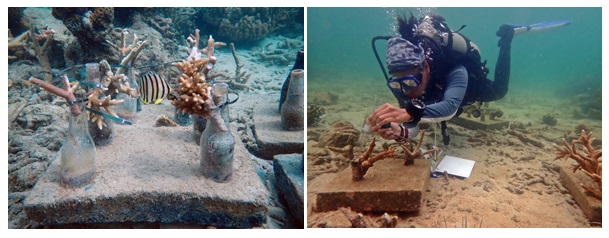
Fig. 3. Reef Check Malaysia trialling different coral reef restoration designs to slow down the rate of decline and increase coral cover. Source: Reef Check Malaysia.
The Oestercheld oyster reefs in the Netherlands (https://www.wur.nl/en/download/Oyster-reefs-to-hold-back-mud-and-sand-flat-erosion.htm) used banks of the bivalves to curb wave action and catch silt as part of the Building with Nature innovation programme (Fig. 4). Oysters are regarded as ecosystem engineers because of their ability to form reefs that can dampen the impact of waves, offer habitat for valuable fish and crustacean species, and increase benthic-pelagic coupling by its filtering capacity.
Oysters capture carbon from the atmosphere, accumulate it in their shells and thus help to mitigate climate change.
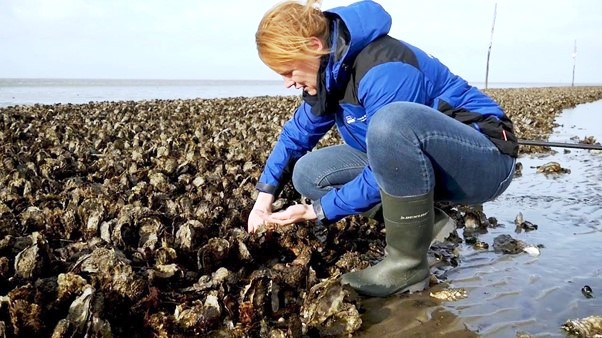
Fig. 4. Oyster reefs at Oestercheld estuary built to dampen mud and sand flat erosion. Similar efforts were replicated in Bangladesh with encouraging results. Source: Wageningen University.
Call for Action
Malaysia’s natural coastlines are under threat not only from climate change related issues but on-going destruction of natural marine habitats primarily from conversion to other uses such as agriculture and aquaculture. Additionally, 37 coastal reclamation projects have been approved so far covering 13 out of the 14 states in Malaysia to date (Fig. 5. Department of Environment, 2021).
Each in different stages of development (proposed/on- going/completed), the extent of these projects varies from development of existing coastlines, to reclaiming land adjacent to coastlines, to building of whole islands creating gaping ecological footprints all along the country’s coastline.
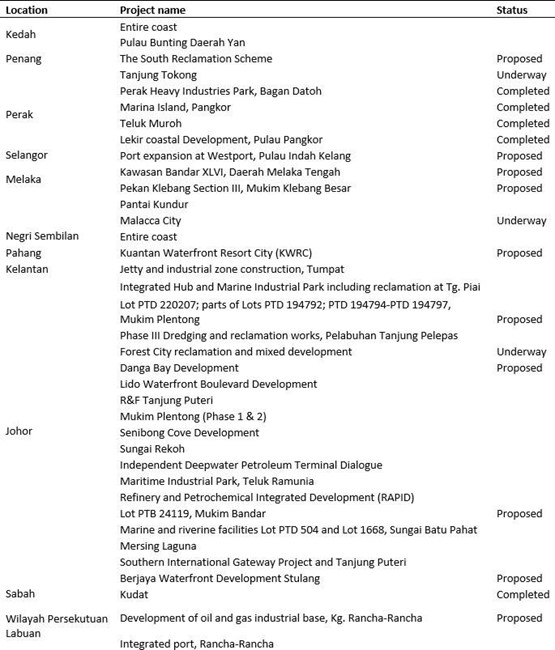
Fig. 5. List of EIA-approved coastal reclamation projects in Malaysia (1988–2021). Source: Department of Environment (DOE), Malaysia.
It is based on this grounds that the federal and state governments within the country must exercise responsibility to ensure that these developments are carried out sustainably, emphasizing natural approaches over artificial ones whenever possible. Solutions based on nature should be employed whenever the opportunity arises to conserve the biodiversity we have left. Perhaps efforts carried out in the past could hold valuable lessons to promote its uptake within the country.
Interestingly, Malaysia has been carrying out efforts that qualify as NbS in marine and coastal environments for many decades now, but the body of knowledge remains fragmented and sometimes difficult to access, complicating the process of charting a way forward and widespread uptake and implementation of NbS in Malaysia. However, it is imperative that the profile of NbS be raised for informing sustainable development policy and planning. To justify mainstreaming and uptake of NbS in a cohesive manner, there needs to be formal categorization, standardized evaluation and monitoring methods, and hard evidence for nature-based efforts and their purported effectiveness. Future research in Malaysia with regards to NbS should be aimed at addressing this gap.
That being said, nature should not be exploited in the name of finding ‘solutions’ to the crises caused by unchecked economic growth. Though aspirations have been identified on what is termed the ‘super year for nature’, to essentially move away from destroying nature to restoration and rehabilitation paths supporting biodiversity and resilient ecosystems, we are still in the boundaries of economy structurally dependent on destructive economic growth – a boundary where nature is regarded as external and hence exploitable, rather than intertwined with humanity (Welden et al., 2021).
The human-nature relationships need to be reframed from being independent to co-dependent. For research, policy, and practice on NbS to support transformative change, there must be a move away from the narrow framing of what nature can ‘do’ for the society to an integrated approach, where solutions are understood as place-based, activated by people in partnership with nature.
When framed this manner, NbS will be able to support transformative visions where humans and nature prosper through global challenges of social and environmental justice, biodiversity loss, and the climate crisis.
References
Cohen-Shacham, E., Andrade, A., Dalton, J., Dudley, N., Jones, M., Kumar, C., ... & Walters,
G. (2019). Core principles for successfully implementing and upscaling Nature-based Solutions. Environmental Science & Policy, 98, 20-29.
Holl, K. D. (2017). Restoring tropical forests from the bottom up. Science, 355(6324), 455- 456.
IPCC (2018). Special Report: Special Report on Climate Change and Land. Accessed on: 25 May 2021. Available at: https://www.ipcc.ch/srccl/chapter/chapter-4/
NASA (2021). Climate change: How do we know? Accessed on: 25 May 2021. Available at: https://climate.nasa.gov/evidence/
Rahman, H. A. (2009). Global climate change and its effects on human habitat and environment in Malaysia. Malaysian Journal of Environmental Management, 10(2), 17-32.
van Oldenborgh, G. J., Krikken, F., Lewis, S., Leach, N. J., Lehner, F., Saunders, K. R., ... & Otto, F. E. (2021). Attribution of the Australian bushfire risk to anthropogenic climate change. Natural Hazards and Earth System Sciences, 21(3), 941-960.
Welden, E. A., Chausson, A., & Melanidis, M. S. (2021). Leveraging nature-based solutions for transformation: Reconnecting people and nature. People and Nature, 1-12.






